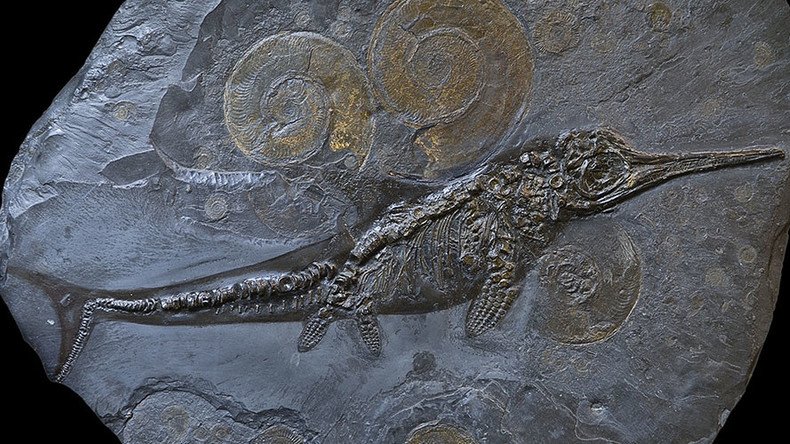Dinosaur denial? Study suggests ichthyosaurs died out failing to embrace change

Ichthyosaurs, unlike other marine reptiles, disappeared tens of millions of years before other dinosaurs did and scientists didn’t know why. But a new international study suggests it was partly due to the sea dragons’ inability to adapt to environmental change.
Usually a link to an obvious event like a large meteorite or a massive volcanic eruption helps scientists understand why a certain species died out. There was no such link when it came to ichthyosaurs.
So a team of scientists from Belgium, Russia, France and the UK set out on a quest to answer one of the most intriguing questions in palaeobiology: why did ichthyosaurs disappear?
They studied the shark-like marine reptiles using cutting-edge techniques and were able to reconstruct the evolution of the ichthyosaurs during the last 120 million years of their lifetime.
READ MORE: Groovy kind of love: Researchers discover dinosaur mating dents in ground
The research, published in the journal Nature Communications, discovered that before their extinction, ichthyosaurs were highly diverse in shape and function.
#FossilFriday Generations of ichthyosaurs in this historical (earlier) interpretation (painting) by Heinrich Harder. pic.twitter.com/iNIGSO9P46
— John Moffitt (@JohnRMoffitt) July 25, 2015
“Ichthyosaurs were actually well diversified during the last chapter of their reign, with several species, body shapes and ecological niches present. However, their evolution was much slower than earlier in their history. Additionally, they were seemingly negatively affected by the profound global changes going on during the Cretaceous, as their extinction rate correlates with environmental volatility,” first author Dr. Valentin Fischer, of the University of Liège, Belgium, and the University of Oxford, UK, said.
Barracudasauroides (Ichthyosauria : Mixosauridae), one of the ichthyosaurs with the coolest names. #fossilfridaypic.twitter.com/dCSaLk1Z2j
— Luigi Gaskell (@Commander_geek) September 25, 2015
At the beginning of the Late Cretaceous period, about 100 million years ago, the Earth’s poles were almost ice-free and sea levels were higher than today - that’s when, with no direct reason, the ‘sea dragons’ disappeared. While other dinosaurs made way for mammals some 34-35 million years later, during the Cretaceous-Paleogene extinction event.












